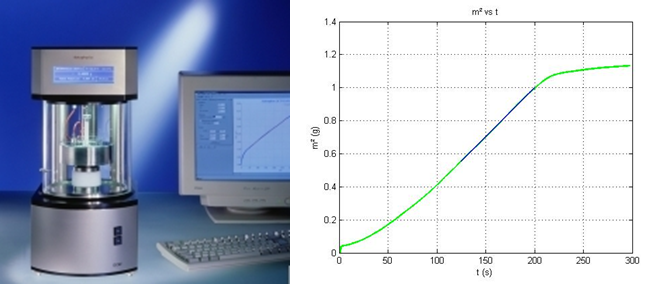Figure 1: DCAT measurement device (left) and measured data curve (right). Contact angle is calculated using the slope of the measured curve.
Objective
Interfacial tensions between two immiscible fluids and surface tensions between a fluid and air can be measured using a tensiometer. For detecting the contact angle a fluid forms with a solid powder in air is measured by the capillary rise method. For the determination of a three phase contact angle between two immiscible liquids and a powder mathematical calculations are necessary. Interfacial tensions and contact angles are important parameters for many product formulations like emulsions, dispersions, foams and coating applications.
Operating principles
Measurements are performed using the commercially available DCAT measurement device from Dataphysics. Surface and interfacial tensions are measured using different geometries (Wilhelmy plate or Du Nouÿ ring) that are brought in contact with the fluid interface and therefore are being wetted by the fluid. The force that arises by the geometry being pulled into the liquid is measured by a sensor over time and is direct proportional to the surface tension. For the determination of the contact angle between a powder and a liquid in air, glass tubes (5 mL) with a porous ceramic filter are attached to the force sensor. The tube is filled with the powder and is brought into contact with a liquid interface. The force sensor is measuring the weight of the fluid being soaked into the lose powder packing via capillary force. With the force over time curve the contact angle can be calculated.
Specifications
| Required sample quantity: | 200 mL |
| Weighing range: | 10 µg to 210 g |
| Temperature range: | -60 bis +450 °C; 0.01 K resolution |
Applications
- Powder contact angle
- Penetration and resisting power
- Surface and interfacial tension
- Critical micelle concentration

